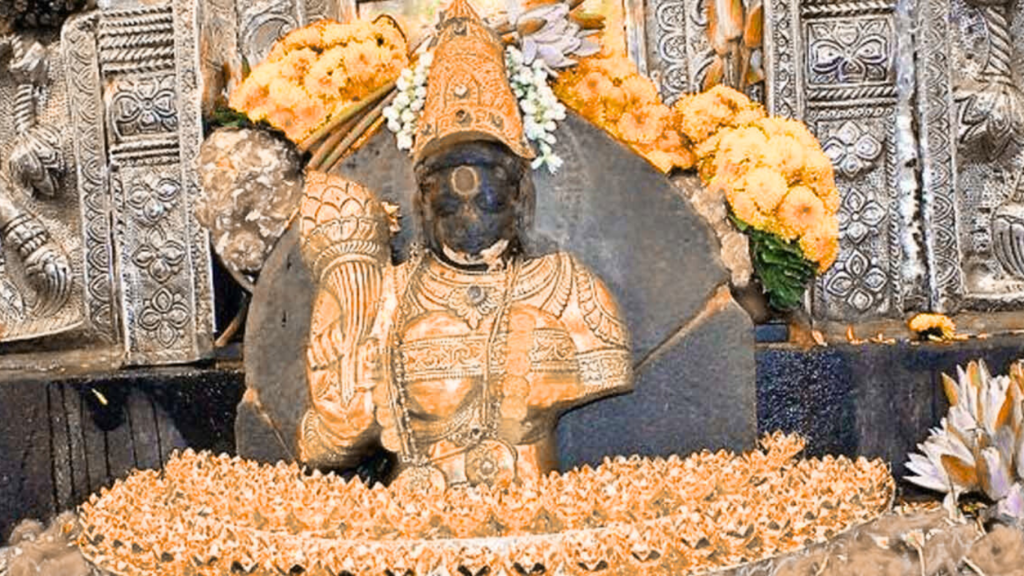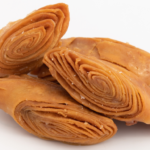Nestled in the heart of Visakhapatnam, the Sri Kanaka Mahalakshmi Temple is a special place where devotees find peace and blessings. Known for its unique open-roof design and deep history, this temple draws thousands to worship Goddess Kanaka Mahalakshmi, believed to be an incarnation of Goddess Lakshmi. Its 24-hour accessibility, with brief closures for cleaning, makes it welcoming for all. Whether you’re a local or a tourist planning a spiritual visit, knowing the temple’s timings and rituals can make your experience smoother. This article covers the temple’s schedule, history, and tips for visiting, helping you plan a meaningful trip. From daily pujas to the vibrant Margasira Masotsavam festival, let’s explore why this temple is a must-visit in Vizag and how to make the most of your time there.
Temple Timings and Daily Schedule
The Sri Kanaka Mahalakshmi Temple is open 24 hours, making it easy for devotees to visit any time. However, it closes briefly for cleaning from 11:00 AM to 11:30 AM and 5:30 PM to 6:00 PM. Daily rituals include Panchamruthabhishekam and Sahasranamarchana from 5:00 AM to 6:00 AM, followed by Sarva Darshanam. Another round of Panchamruthabhishekam and Astotharanamarchana happens from 11:30 AM to 12:00 PM, with Rajabhogam and Mahanivedhana. Evening rituals resume from 6:00 PM to 6:30 PM, followed by Sarva Darshanam until the next morning. Special pujas, like Ksheerabhishekam on Fridays from 8:00 AM to 9:00 AM, add to the spiritual vibe. These timings ensure devotees can plan their visit around key rituals, especially during busy festival seasons.
Key Daily Pujas
Daily pujas at the temple are a highlight. From 5:00 AM to 6:00 AM, Panchamruthabhishekam and Sahasranamarchana set a sacred tone, followed by Balabhoga Nivedhana. Midday rituals from 11:30 AM to 12:00 PM include another Panchamruthabhishekam and Astotharanamarchana, with offerings like Rajabhogam. Evening pujas from 6:00 PM to 6:30 PM feature similar rituals, ending with Sayamnivedhana. Devotees can join these pujas, often performing their own offerings with turmeric, kumkum, or milk, making the experience personal and unique.
Special Weekly Rituals
Fridays are special with Ksheerabhishekam from 8:00 AM to 9:00 AM, a milk-based ritual for Goddess Mahalakshmi. Tuesdays feature Ashtadala Padmaradhana Puja (Rs. 1116), while the first Tuesday of each month includes Kumkuma Puja from 7:00 AM to 9:00 PM. On Pournami (full moon), the Srichakra Navavarana Puja (Rs. 2500) draws crowds. These rituals attract more devotees, especially on Thursdays, considered auspicious for the goddess, so plan for longer queues.
History and Significance
The temple’s history dates back to 1912, when the idol of Goddess Kanaka Mahalakshmi, known as Ammavari, was found in a well near Burujupeta’s fort. Believed to be the family deity of Vizag’s ancient rulers, the idol was placed in the center of a road. In 1917, when moved for road widening, a plague outbreak struck, leading locals to return it to its original spot, believing it stopped the epidemic. The temple’s open-roof design, per the goddess’s wish, symbolizes her omnipresence. Today, it’s a spiritual hub, especially during the Margasira Masotsavam, drawing over six lakh devotees. Its unique feature—allowing devotees to perform their own pujas—makes it deeply personal.
A Unique Open-Roof Design
The temple’s lack of a roof over the idol is its standout feature. Legend says the goddess wanted it this way to watch over her devotees like a mother. This open sanctum creates an intimate connection, letting worshippers offer prayers directly with turmeric, kumkum, or flowers. The five-tiered gopuram and intricate designs add to its charm, making it a visual and spiritual delight for visitors. This unique setup draws both locals and tourists seeking a personal divine experience.
The 1912 Origin Story
In 1912, the idol of Ammavari was discovered in a well near the old fort in Burujupeta. Initially placed in the road’s center, it was moved in 1917, sparking a plague outbreak. Locals believed the goddess’s displacement caused the tragedy, so they reinstalled the idol, and the plague subsided. This story fuels the belief that sincere prayers here are answered, making the temple a powerful spiritual site for devotees.
Festivals and Crowds
The temple shines during the Margasira Masotsavam, a month-long festival from December to January, attracting around six lakh devotees. Thursdays are especially busy, with nearly 10,000 visitors for special pujas. Events like Vedha Sabha, Ratha Yatra, and Maha Annadanam (feeding thousands) mark the festivities. Other festivals, like Ugadi and Navratri, see the goddess adorned with stunning ornaments. Expect long queues during these times, especially on Thursdays, considered the most auspicious day. The temple’s arrangements, like medical camps and free buses, ensure a smooth experience despite the crowds. Plan your visit early to avoid wait times.
Margasira Masotsavam Highlights
Held from December to January, Margasira Masotsavam is the temple’s biggest event. It features special pujas, like Panchamritabhishekam, and cultural programs, including Nadaswara Kacheri and Ratha Yatra. The festival ends with a Maha Annadanam and Sahasra Kalasabhishekam on the last day. Over six lakh devotees join, with Thursdays drawing huge crowds for their auspicious significance. The temple provides drinking water, medical camps, and security to manage the rush.
Other Key Festivals
Beyond Margasira, the temple celebrates Ugadi and Navratri with fervor. During these festivals, the goddess is decked in gold and silver ornaments, creating a breathtaking sight. Fridays during Sravana Maasam feature special Lakshmi pujas, like Shukravara Lakshmi Pooja, drawing devotees for blessings. These events can get crowded, so arriving early or opting for special darshan tickets (Rs. 50–200) helps you avoid long waits and enjoy the festive spirit.
How to Reach the Temple
Located in Burujupeta, Visakhapatnam, the temple is easy to reach. By air, Visakhapatnam International Airport is 12–13 km away, with taxis or autos available. The Visakhapatnam Railway Station, just 3 km away, connects to major cities, and you can walk or take an auto. Dwarka Bus Stand, 5 km away, offers state buses, with private vehicles or autos for the final stretch. Local buses, shared cabs, or taxis make getting around simple. The temple’s central location near Jagadamba Junction makes it a convenient stop while exploring Vizag’s beaches or other sites. Check travel options for a hassle-free visit.
Travel by Air and Rail
Visakhapatnam International Airport, 12–13 km from the temple, serves flights from cities like Hyderabad and Chennai. From there, hire a taxi or auto for a quick ride. The Visakhapatnam Railway Station, only 3 km away, connects to major cities. You can walk to the temple in about 30 minutes or take an auto for a faster trip. Both options make the temple accessible for travelers arriving by air or rail.
Local Transport Options
From Dwarka Bus Stand, 5 km away, you can take a local bus, shared cab, or taxi to reach the temple. Autos are common and affordable in Vizag, especially from Jagadamba Junction. During festivals, APSRTC runs free buses from areas like Gajuwaka and Simhachalam to Burujupeta, easing travel for devotees. Walking is also an option if you’re nearby, but autos are quicker for most.
Tips for a Great Visit
To make your visit to the Sri Kanaka Mahalakshmi Temple special, plan around its 24-hour schedule, avoiding cleaning times (11:00–11:30 AM, 5:30–6:00 PM). Entry is free, but special darshan tickets (Rs. 50–200) or puja tickets (e.g., Rs. 516 for Panchamrutha Puja) can save time. Leave footwear outside and deposit phones at the mobile counter (Rs. 10). Men performing Abhishekam need a dhoti, provided by the temple. Visit on weekdays or early mornings to avoid crowds, especially during festivals. Nearby eateries like Andhra Hotel offer tasty South Indian food to round out your trip. Enjoy the temple’s serene vibe and unique rituals.
Planning Your Visit
Arrive early, especially on Thursdays or during Margasira Masotsavam, to beat the crowds. Free darshan is available, but special tickets (Rs. 50–200) let you enter the Garbha Gudi for a closer view. Book puja tickets, like Panchamrutha Puja (Rs. 516), in advance at the temple counter. No online booking is available, so reach the ticket counter an hour before rituals like Abhishekam. The temple’s 24-hour access makes it flexible for any schedule.
Nearby Attractions
After visiting, explore Vizag’s gems. RK Beach, 4 km away, offers stunning sunset views and snacks. Kailasagiri Hill Park, 8 km away, has panoramic views and a ropeway ride. The INS Kursura Submarine Museum, 5 km away, dives into naval history. Simhachalam Temple, 20 km away, is a must for Lord Narasimha devotees. These spots make your temple visit part of a broader, memorable Vizag adventure.



